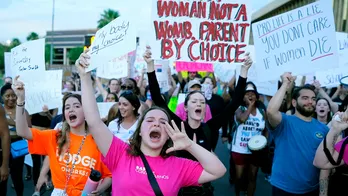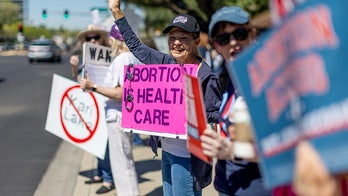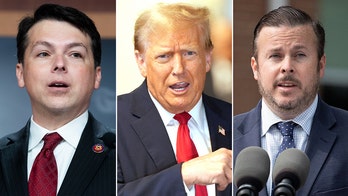On Thursday, for the first time in 308 days, President Obama will confront the White House press corps in a full-blown news conference, taking the best shots that reporters have to offer on the topics of their choosing.
Obama's lengthy absence from reporters' crosshairs has exceeded President George W. Bush's longest gap of 204 days.
As a candidate two years ago, Obama, then a senator, mused aloud about holding a news conference every month.
As president, Obama has held just four prime-time news conferences in the first 485 days of his term, but that is equal to the total number that his last three predecessors – combined – had held by the same point in their first terms. The Bushes had each held one; Bill Clinton, two.
Click here to view a chart of Obama's press conferences compared with predecessors.
Obama, however, has stood for fewer news conferences in which reporters were free to ask him questions on the topic of their choosing.
The dwindling frequency of these East Room extravaganzas stems in part from the fragmentation of the prime-time TV viewing audience, said analysts of the presidency and the news media. It is now split between broadcast and cable, video and on-demand options, and has hundreds more channels to choose from than the three networks that solemnly aired President Kennedy’s winning quips, or Dan Rather’s confrontations with President Nixon.
As evidence of how Americans can tune out the leader of the free world, consider that Obama’s first prime-time news conference drew an estimated audience of 49 million – and that his last, some 308 days ago, drew an estimated 20 million.
It is equally clear, though, that the unusually long gap since Obama’s last prime-time news conference – held back on July 22, 2009 – owes to Obama’s preferences and style in the realm of rhetoric and communications.
Historian Martha Joynt Kumar of Towson State University, who compiles data on presidential media appearances, said the figures reveal that Obama tends to utilize formats where he can expound at greater length. She breaks down presidential exchanges with the news media into four categories: primetime news conferences; news conferences held alone or jointly alongside a foreign head of state; brief Q-and-A sessions, which typically transpire in the Oval Office, the Cabinet Room, or similar settings; and one-on-one interviews.
Adding up those four categories, Kumar finds this president, through May 20, has faced reporters’ questions on 280 occasions in the first 485 days of his term. That compares with 275 such instances for George W. Bush, 454 for President Clinton, and 198 for George H.W. Bush.
While that total figure reflects almost exact parity between Obama and his immediate predecessor, a more detailed breakdown reveals a stark difference in the way the two men approached their interactions with reporters. Where George W. Bush held 186 brief Q&A's – the daily bread and butter for the White House press corps, particularly wire service reporters – and gave only 56 personal interviews, Obama has done almost exactly the opposite. He has held only 56 Q-and-As, and granted 188 personal interviews.
“He prefers explaining a particular issue, and so what he likes to do is do interviews,” said Kumar, author of "Managing the President’s Message." “And those kinds of events which are pooled in the Oval Office or Roosevelt Room, Cabinet room, at the top or bottom of the meeting, and the wires get a couple of questions -- he wants to go into detail and that's not a good setting for it.”
Kumar noted that President Eisenhower was the first chief executive to place press conferences on the record and also the first to televise them.
“And at the start of one of them, he talked about how he's going to climb the weekly cross and you drive in the nails," she said. "And I think that most presidents have regarded press conferences in a similar way.”
Dana Perino, who served as press secretary to George W. Bush during his final sixteen months in the White House, told Fox News that Obama’s lack of primetime events is a “mystery” to her.
“Obviously, President Obama does well in communicating, and if he had an opportunity to answer lots of questions, it would show the breadth and scope of all that he has to cover in a given day,” she said. “In some ways, you have to wonder what are they afraid of.”
The answer to that question may be no different for any occupant of the Oval Office, regardless of his political persuasion or party affiliation.
During Obama’s last primetime news conference, almost a year ago, he castigated the Cambridge Police for acting “stupidly” when they arrested Harvard professor Henry Louis Gates – a remark that served to further inflame the heated racial controversy surrounding the arrest.
Perino, for her part, winced at mention of the moment in April 2004 when John Dickerson, then a reporter for TIME magazine, stymied President Bush with the disarmingly simple question: “What would your biggest mistake be…and what lessons have you learned from it?” Seemingly flummoxed, Bush hesitated before replying: “I wish you would have given me this written question ahead of time, so I could plan for it.”
For the record, the White House counts the nuclear summit in April as Obama’s last news conference. On that occasion, eight reporters asked questions, and Obama's lengthy opening statement accounted for 30 percent of the roughly 5,000 words exchanged.
Fox News' James Rosen contributed to this report.




